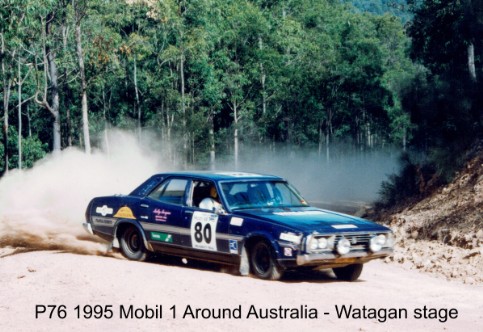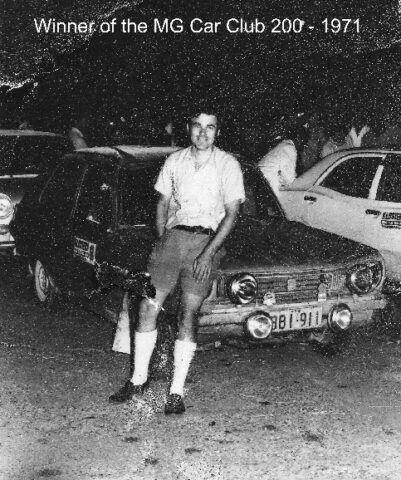 Then there were Falcons and a Colt 1100 SS. Later he purchased a demo Leyland P76 from the factory in Zetland and ran it in the 1979 Repco Trial, finishing a creditable 39th. For the 1995 Mobil 1 he borrowed his wife’s Targa Florio P76 and finished 17th outright. Hal continues to compete in Targa Tasmanias and still own several P76s, including the Targa Florio in rally trim and in beautiful condition. (To state the obvious Hal Moloney is not an advocate of the argument that the Leyland P76 was a lemon.)
Then there were Falcons and a Colt 1100 SS. Later he purchased a demo Leyland P76 from the factory in Zetland and ran it in the 1979 Repco Trial, finishing a creditable 39th. For the 1995 Mobil 1 he borrowed his wife’s Targa Florio P76 and finished 17th outright. Hal continues to compete in Targa Tasmanias and still own several P76s, including the Targa Florio in rally trim and in beautiful condition. (To state the obvious Hal Moloney is not an advocate of the argument that the Leyland P76 was a lemon.)
Hal includes the details of every car, its crew, where they hailed from , as well as their results. There are literally thousands of cars, the exercise a tribute to Hal’s persistence, research skills and Trove. Did you know, for instance, that there were no fewer than ten Monaro GTS 350s entered in the 1970 Ampol Trial? Apart from the one driven by Colin Bond, Brian Hope and Tony Roberts that came third, none did especially well. Still, that is a significant number of valuable Holdens that never made it to the booming classic car market of 2019!

